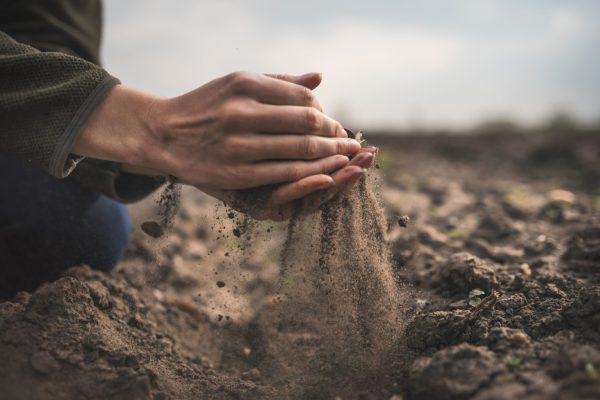Laneway analysis
Jordanalys Spurway shows the amount of plant nutrients available in the soil for the plants in the coming weeks. By continuous monitoring of a crop with analysis about every four weeks (depending on the crop), emerging nutrient deficiencies can be addressed in time by supplementary fertilization. To obtain a basis for basic fertilization, samples are taken during winter/spring. We have target values for many crops that show how the nutrient values should be.
Spurway analysis is carefully designed to extract plant nutrients in a way that closely mimics the ability of roots to take up nutrients from the soil.
Low calcium values in the analysis indicate a need for liming. The Spurway analysis is the best method for assessing whether liming is needed. In general, it can be said that there is a need for liming at calcium levels below 400 mg/l. If magnesium is also deficient, lime containing magnesium should be chosen.


Phosphorus is difficult to obtain good values in all types of soil analysis, especially in high pH soils. Some substances may show availability in soil analysis, but may still be difficult for the plant to take up, for example because it requires a lot of energy. This is especially true for iron, where an analytical value from soil analysis never really says anything about uptake. Plant juice analysis provides the best answer to how good the nutrient uptake of various substances is.
Analytical results are given in mg/l. The unit of volume is used because roots grow in a certain volume, not in a certain weight of soil. mg/l is convenient because it corresponds to kg/ha for 1 dm of topsoil. If the sample is taken from the topsoil at a depth of 0-2.5 dm, the analytical value is multiplied by 2.5 to give the number of kg of available nutrients in the topsoil.
Jordanalys Spurway design and scope
The sample is dried, mixed and sieved. The conductivity and pH are measured after soaking part of the sample in distilled water for 15 and 30 minutes respectively. The nutrients are extracted with a weak acetic acid solution for 30 minutes and then filtered. The nutrient content is measured by spectrometry.
If the soil contains fine clay particles, they can pass through the filter and produce high aluminum levels. As long as the pH of the soil is above 5.5, it is unavailable to plants (aluminum is toxic to plants, so if the pH is low, high Al levels can be a problem).
The analysis includes pH, conductivity and plant nutrients: nitrate nitrogen, ammonium nitrogen, phosphorus, potassium, magnesium, sulphur, calcium, manganese, boron, iron, sodium and aluminum. Note that organically bound nitrogen (with several elements) is not included in the analysis.
Optional Micro
Optional "Micro" analysis can be requested for copper, zinc and molybdenum extracted with chelate. This may be justified if, for example, you have new soil that you do not know. But these substances are not the most problematic in terms of plant availability and therefore you can usually settle for the usual Spurway analysis. You can get a better idea of these substances by doing a plant sap analysis as a supplement later in the season to see how much the plant really takes up.
Sampling
Take at least 10 subsamples, which are mixed into a composite sample.
When sampling in the field, use a soil auger. Walk diagonally across the field (or in a circle where you know the soil is representative). In case of repeated sampling, take samples along the same line. The sample should be taken as deep as there are working roots. Normally the whole topsoil layer is sampled, about 25 cm (on golf courses 10 cm is recommended, possibly divided into 0-3 cm and 3-10 cm because dressing with sand and peat often results in a low surface pH). For cupped crops such as potatoes, the sample is taken diagonally through the cups, i.e. not at the top and not at the bottom of the cups. For drip irrigation, the sample is taken diagonally through the drip point.
When sampling in potsplants, take plants, take samples from the part of the clump that contains roots. The top layer is often salt contaminated and should not be included. Take one sector from eachlump from at least 10 different pots representative of the culture; it is usually possible to pull with the thumb from the start of the roots downwards into the clump and thus get a piece of the clump. UAvoid taking pots from the edges of tables and not from dried out plants.
After thorough mixing of the subsamples approximately 0,5 liters of soil is taken for analysis. Pack in a sample box or plastic bag.

Consignment note
Attach delivery note with sample number, sample name, plant species and stage of development, and indicate if it is from organic farming. Remember to include the name and invoicing details (including organization/personal number), as well as the e-mail address of the persons to whom we will send the results.
Response time
Analysis results for Jordanalys Spurway are provided by email the next working day after the sample reaches LMI (sample delivery no later than 16.00!)
For samples arriving between 16.00 and 17.00, the response time is 2 working days.

